

| The J, K, L, squares in the 7-10 meter level were excavated even though the conditions for excavation were difficult. Many large roots invaded these squares due to nearby trees. In the photo above, I am kneeling in square K10 while working on K9, while L9, on my right, has yet to be excavated. The L squares border on the backfill of the1999 Conte-Eddowes excavations. This work is basicly "salvage" archaeology in the hopes of recovering artifacts. |
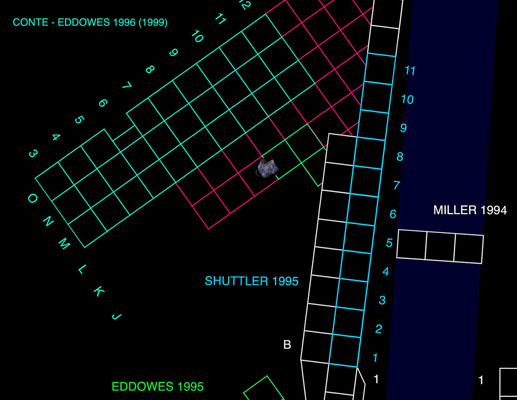
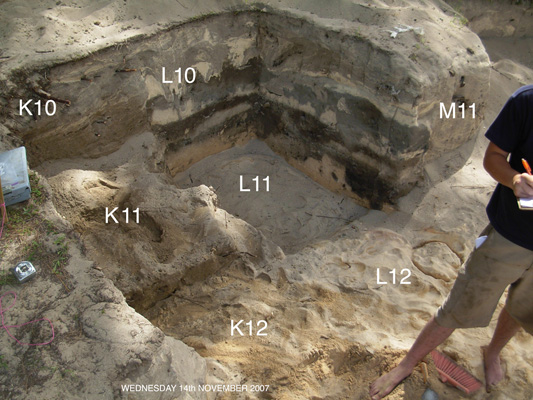
| We started this section on the 19th of November. Prior to this Jeff Putzi had excavated L11 and L12. and Mark Eddowes had excavated K11 and K10 in 1995. In the photo above we can see the separtation between K10 and L10 where the ancient layers are still intact. |
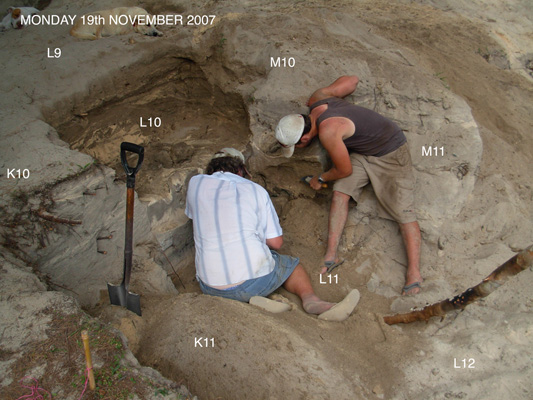
| In the photo above, we are salvaging the remaining material from the interface of L11 and M11, Square L10 has been prepared for excavation with the upper disturbed layers removed. |
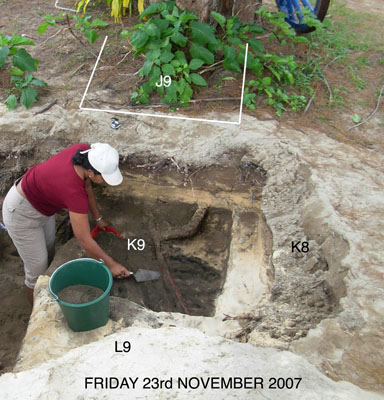 >
>| By Friday 23rd of November, we had removed the Eddowes backfill from K10 and started to excavate K9. Roots from the tree in square J9 were a problem, however some important fishhook fragments were eventually recovered from layer C and the interface of layers D and E (Bollt layer system). |

| A number of charcoal bearing hearths were found at the bottom of the lowest cultural layer (F). Charcoal samples were collected and the hearths photographed. A number of rocks can be seen embedded in the hearths..... |
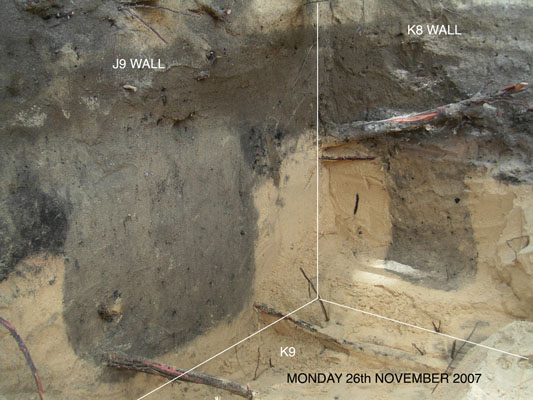
| .....removing the remaining hearth material and excavating further into the sterile sand layer reveals a number of deep intrusions. The pit feature in the wall of square J9, shown in the photograph above is more than 50 cm in depth. |
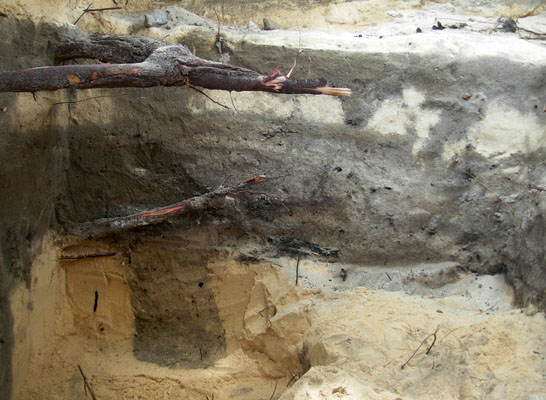
| Here we see the wall of K8, with a pit that may derive from layer E |
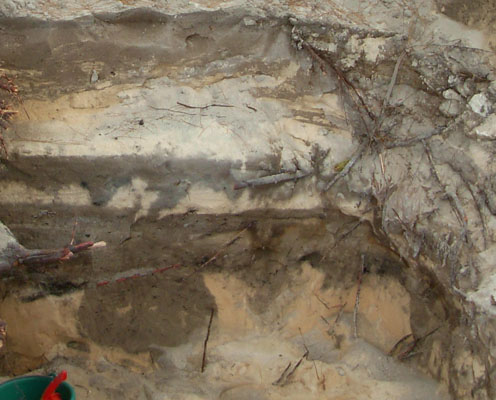
| After further removing the bottom sterile sand layer we see yet another pit exposed in the wall of K8, this pit that obviously derives from a layer above the lowest layer as it can be seen to be cutting through it. |
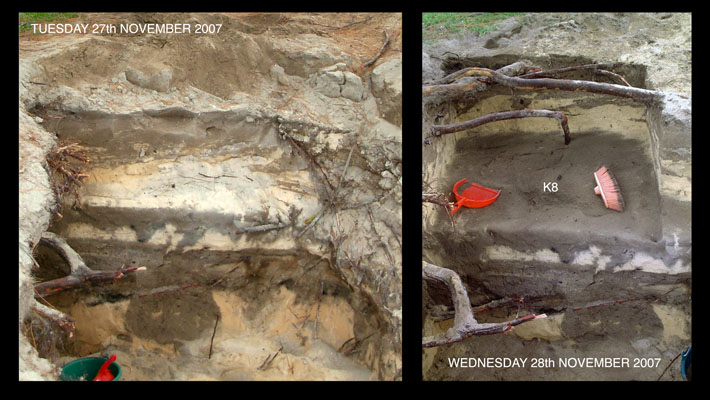
|
In the above photo we can see the excavation process of square K8 with the uppermost cultural layer (C) fully exposed. Fortunately many of the larger tree roots are confined to the upper plow zone layer. Before we proceed to an examination of the artifacts recovered from these squares (J11, K8-11, L8-12) I would like to first describe the various layers and the systems that have been employed by different authors to describe them. (see the next page) |
| go to the next page ATIAHARA - layer systems |
| Go to Comparative Implementology | go to ATIAHARA.ORG |